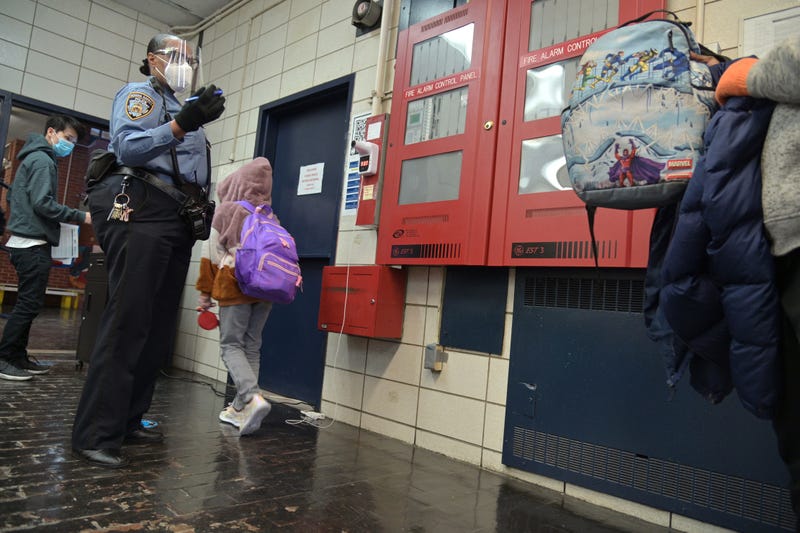
NEW YORK (1010 WINS) — The NYPD is increasing the number of officers stationed in and around New York City schools, Chief of Department Jeff Maddrey announced Thursday.
The order requires precincts to have six Youth Coordination Officers with a total of 462 officers in schools — up from 350.
YCOs, a new type of cop introduced in 2020, are tasked specifically with policing and interacting with minors.
In addition to the YCOs, the NYPD will be assigning patrol cops, violence interrupters and community affairs officers to schools in an attempt to mitigate violence.
Maddrey told 1010 WINS patrols started Thursday with a focus on the places students travel to and from school and spots kids might congregate after class.
That means more cops at subway stations, bus stops and parks as students travel to and from school.
There’s no set time frame for this program, according to Maddrey. The department will make changes as it deems fit.
The surge was announced the day after a 15-year-old girl and 17-year-old boy were shot near a Williamsburg charter school. Both students survived, and police have not yet made any arrests.
A 2020 University of Connecticut analysis raised questions about the efficacy of police in schools at stopping violence as well as unintended negative impacts on students.
School Resource Officers only successfully intervened in three shootings across 197 instances of gun violence at U.S. schools since 1999, according to a study cited by the paper.
While their presence hasn’t stopped shootings, it has led to arrests of students for non-criminal offenses that would traditionally fall to school disciplinary mechanisms to address.
In one survey cited by the paper, 77% percent of SROs reported that they had arrested a student “simply to calm them down.” Another 55% reported arresting students for minor offenses because a teacher wanted the student detained.
This criminalization of youth behavior disproportionately affects Black and Latino children.
A survey of school arrests in Connecticut found Black and Latino students are arrested at four and two times the rate of white students respectively.
“The research shows that policing in schools undercuts the development of a healthy, just, nurturing environment, especially for students of color,” wrote the researchers. “Evidence-based alternatives to school policing are grounded in child development, relationship-building, and justice that address safety concerns in such a way that protects the well-being, dignity, and human rights of all students, families, and school personnel.”



